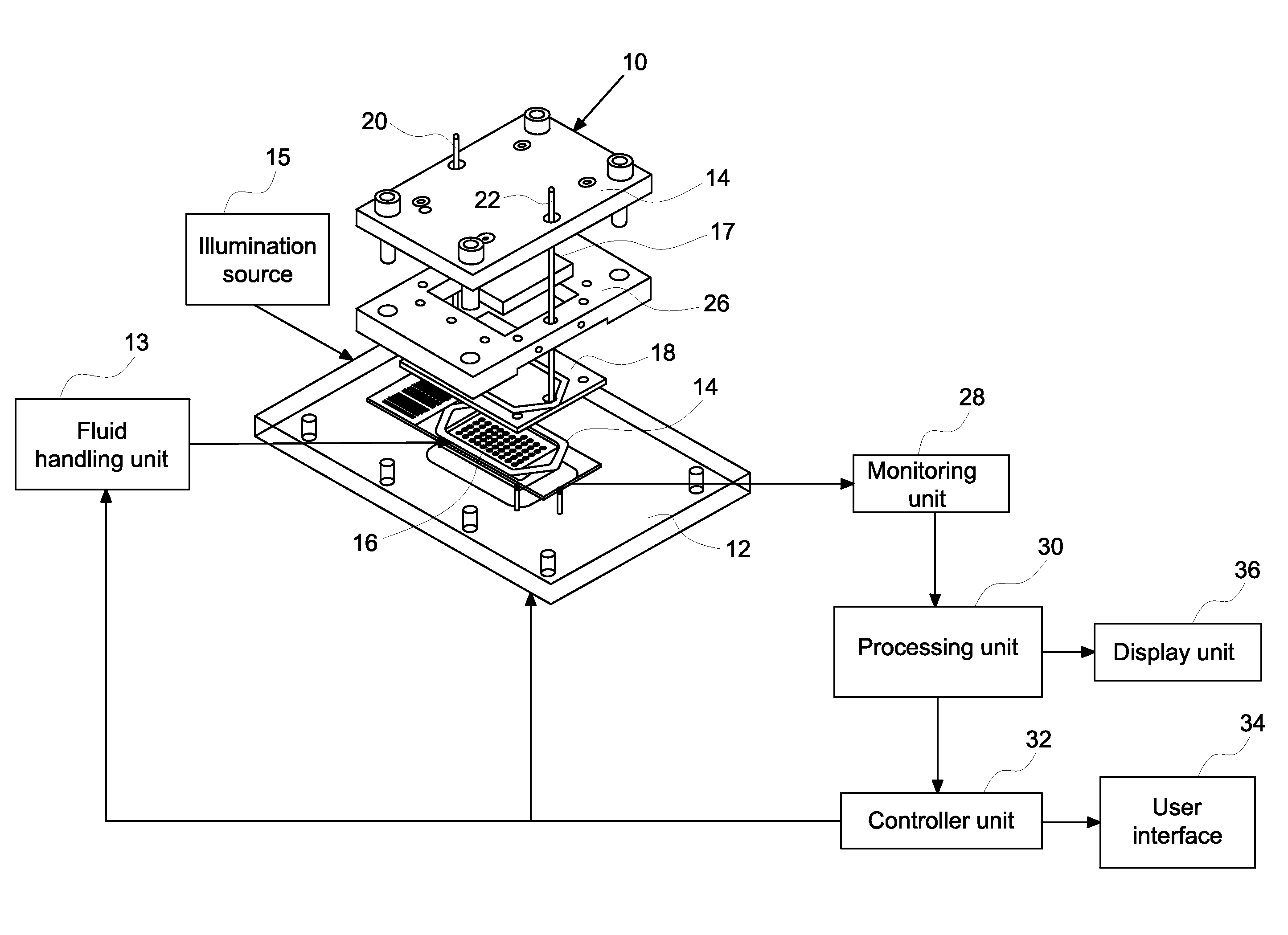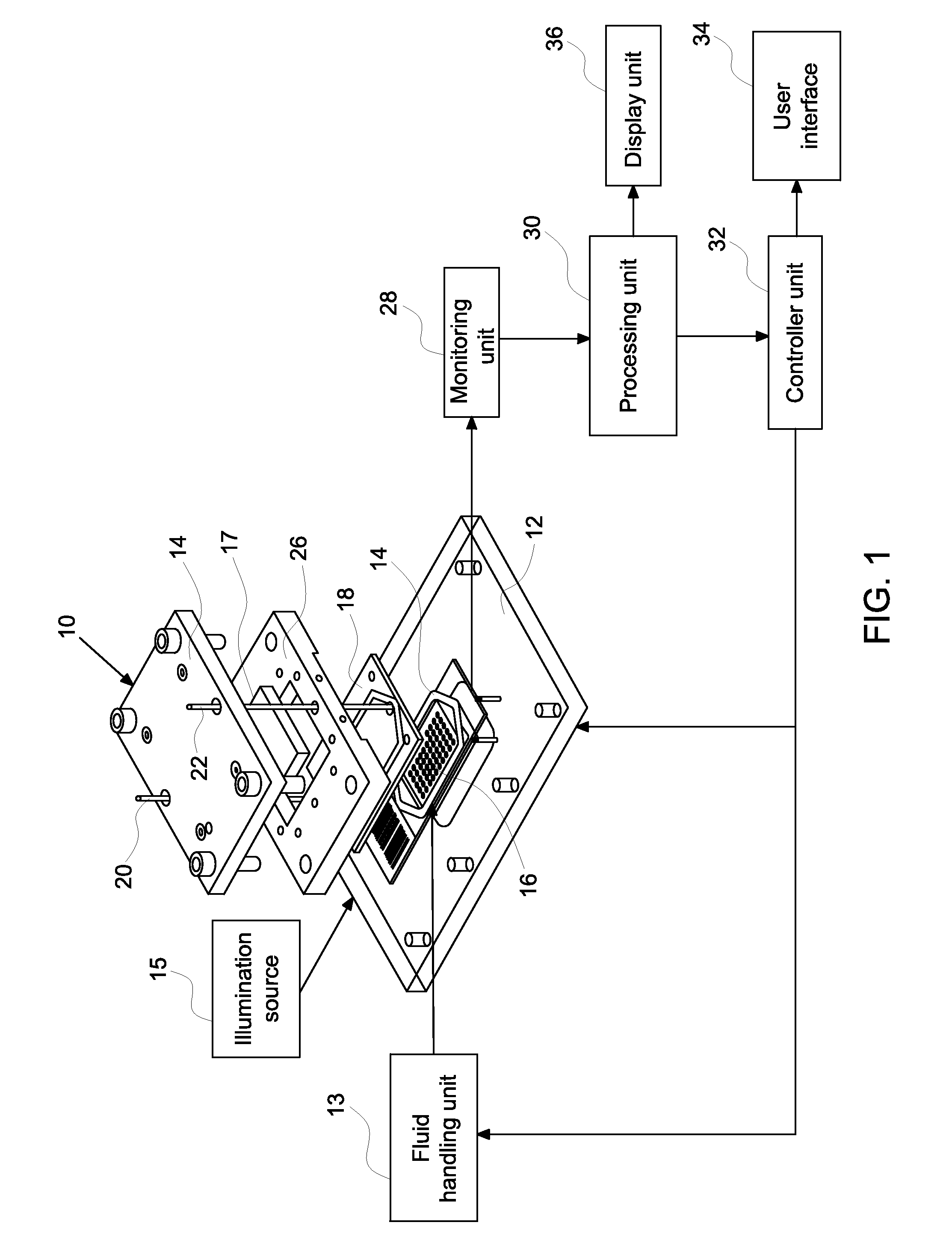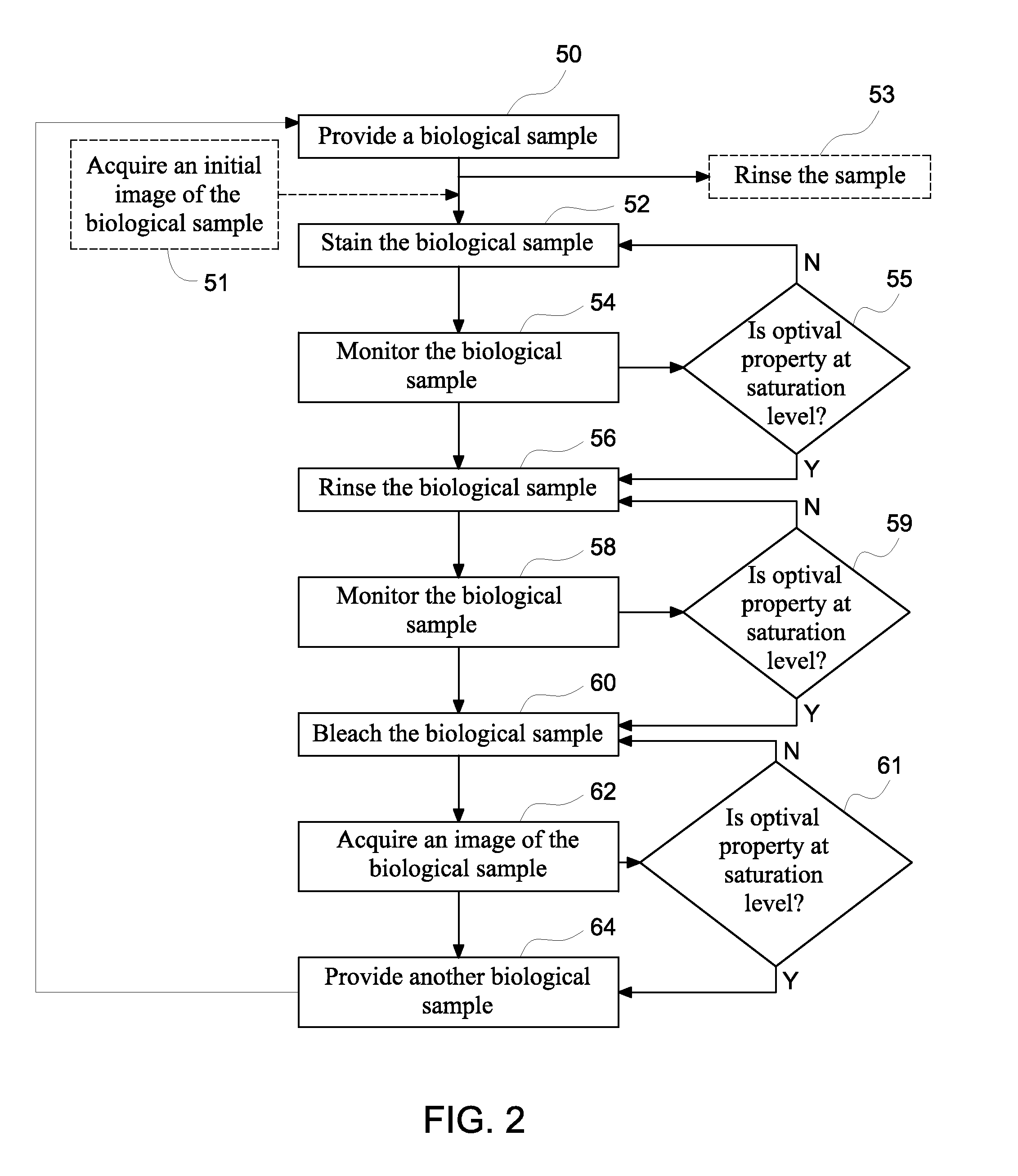Closed loop monitoring of automated molecular pathology system
a technology of molecular pathology and monitoring system, which is applied in the field of automatic methods and devices for iterative staining of biological samples, can solve the problems of limited shelf life, high cost of reagents used in the staining process, and time-consuming manual techniques that are susceptible to errors
- Summary
- Abstract
- Description
- Claims
- Application Information
AI Technical Summary
Problems solved by technology
Method used
Image
Examples
Embodiment Construction
[0010]Embodiments relate to methods and systems for closed loop monitoring of an automated molecular pathology system for molecular imaging. The methods and systems enable optimized operation in molecular imaging. In certain embodiments, the automated molecular pathology system may operate with minimal operator intervention by reducing or eliminating the need to transfer samples (e.g., tissue samples on a slide within the flow cell). The systems and methods may reduce or eliminate the need to displace samples between the staining component and the imaging component. Closed loop monitoring minimizes both reagent volume and reagent dwell time within the system thereby saving on expensive reagents, such as fluorescence labeled antibodies, and minimizing reagent decomposition or side reactions.
[0011]In certain embodiments, a closed loop automated method for staining a biological sample comprises providing a biological sample, staining at least a portion of the biological sample, monitor...
PUM
| Property | Measurement | Unit |
|---|---|---|
| thickness | aaaaa | aaaaa |
| thickness | aaaaa | aaaaa |
| thickness | aaaaa | aaaaa |
Abstract
Description
Claims
Application Information
 Login to View More
Login to View More - R&D
- Intellectual Property
- Life Sciences
- Materials
- Tech Scout
- Unparalleled Data Quality
- Higher Quality Content
- 60% Fewer Hallucinations
Browse by: Latest US Patents, China's latest patents, Technical Efficacy Thesaurus, Application Domain, Technology Topic, Popular Technical Reports.
© 2025 PatSnap. All rights reserved.Legal|Privacy policy|Modern Slavery Act Transparency Statement|Sitemap|About US| Contact US: help@patsnap.com



